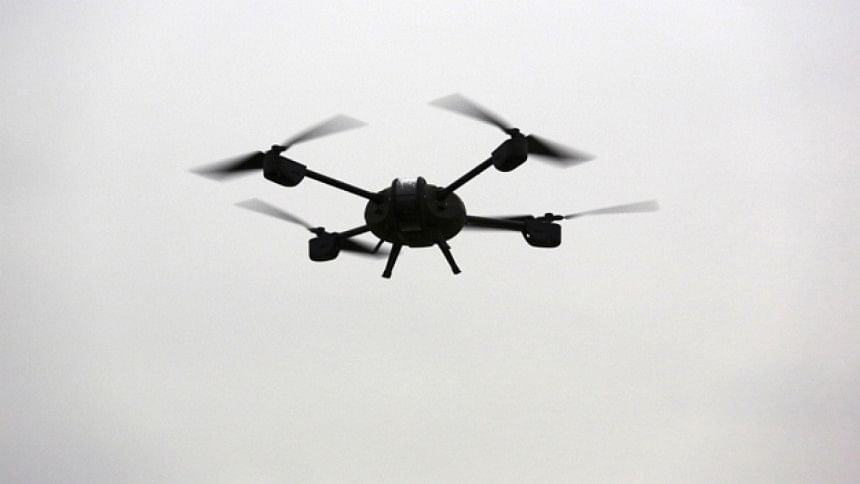Enabling businesses with drones

Drones, or unmanned aerial vehicles, were first commercially used in the early 1980s when a farming group in Japan tried to fly pilotless helicopters over their fields to spray pesticides.
The available technology at that time was expensive and difficult to deploy.
However, over the decades, technology has progressed and regulations have become more accommodative, thereby opening up quite a few new possibilities for the use of drones.
Several sectors in Bangladesh could benefit from this new technology and adopt it to transform themselves --agriculture and infrastructure are foremost among these.
Over the last couple of years, the capabilities of drones have increased to a great extent. While they still retain two categories of shape -- one with wings and one with multiple rotors -- developments in modern software have given them the ability to fly without any human intervention from the ground. As a result, drones cannot only fly themselves but also fly beyond the line of sight.
Additionally, drones can perform a wide range of tasks. A drone can climb and crawl. It can grab objects using its robotic arms. It can communicate with each other using mounted communication devices. A drone can yield each other space when operating in closed areas.
It can also recognise objects using facial recognition software.
The evolving drone-powered solutions offer a host of advantages to organisations across sectors.
Better precision: Drones can perform certain tasks with higher precision than humans. They can inspect bridges, telecom towers, flooded farmlands, and assets in open areas. For example, drones can assess the damage due to floods in a village in Bangladesh and identify areas that require detailed human inspection, thus eliminating the need for a human inspector to survey the whole area. Government agencies can assess damages and arrange relief measures accordingly.
Similarly, insurance companies can estimate the claims to be settled based on an assessment by drones.
Improved productivity: With better precision and speed of operations, drones help improve the productivity of human workers. For instance, a fully automated drone would be able to inspect twice the number of telecom towers that a human inspector could. The associated computer software would be able to highlight the areas that require human assessment, thereby enabling a human inspector to accomplish more.
Improved safety: Drones can easily operate in areas that are difficult and unsafe for humans to reach and work in, like windmill and telecom towers. In the case of human inspection, these towers have to be switched off for safety reasons. Such precautions do not need to be taken in the case of drones. The towers can continue to function without interruption as the drones operate from a reasonable distance.
More scalability: In areas like e-commerce and transportation of critical supplies, drones can help businesses scale up their operations by allowing them to ramp up their delivery speed. Some of the large e-commerce companies are experimenting with drone-powered delivery of ordered goods. Similarly, aid organisations are experimenting with the use of drones for faster delivery of medical supplies to remote or flood-affected areas.
While the functions of drones are still improving and the associated technologies continue to mature, the future of drone-powered solutions is quite promising.
Many companies in different countries are exploring ways of applying drones to improve their business performance.
For example, commercial farming organisations are using drone technology to assess damage in case of natural calamities like floods.
These organisations are also using drone technology to acquire crop pictures and estimate the crop yield using computer software.
In agrarian countries like Bangladesh, successful application of such technology will bring significant benefits to farmers.
Similarly, enterprises across sectors are trying to visualise their business as a drone-enabled one. They are also equipping their workforce with the necessary knowledge to learn and apply drone technologies in their business.
Drone-powered solutions have enormous potential for growth in Bangladesh. Sectors like agriculture, infrastructure and financial services will benefit greatly from the use of drone technology in the coming years.
The writer is an executive director at PwC. The views expressed here are personal.

 For all latest news, follow The Daily Star's Google News channel.
For all latest news, follow The Daily Star's Google News channel. 



Comments